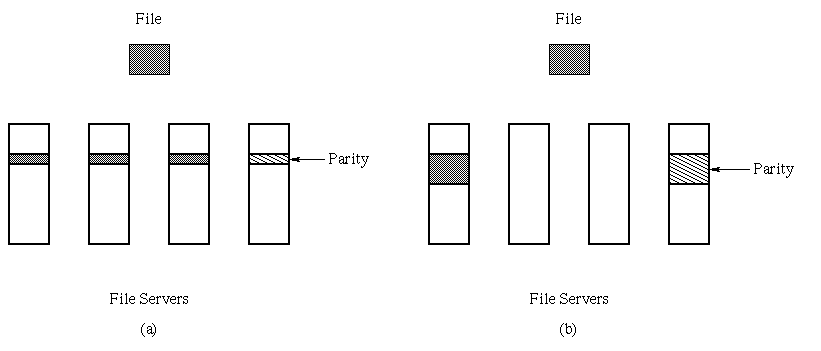
| 6.033 - Computer System Engineering | Handout 30 - Issued April 14, 1999 |
Chapter 8, sections A and B and appendix 8-A cover this lecture material. And optional, but perhaps useful for design project 2: Appendix 8-B.
Today's reading is "Disk system architectures for high performance computing" by Katz et al., reading #27. This paper describes how to build high-availability storage systems using disk arrays; its terminology is used by industry today. Sections I through IV can be skimmed; the key section to focus on is Section V. (If you aren't familiar with how disks work, it is worth reading the first four paragraphs of section II carefully and also paying a little, but not much, more attention to section IV.) .
Reading report question:
A striped network file system is one that distributes file data over multiple file servers in the same way that RAID distributes data over multiple disks. This allows several servers to participate in the transfer of a single file.
But small files are difficult to handle efficiently with file based striping.
There are primarily two ways of storing small files in such a system. One way is to stripe the file across all servers such that each server stores only a small piece of the file. This is shown in figure a below. Alternately, a small file can be stored at a single server. This is shown in figure b.
Discuss the advantages and disadvantages of the above approaches for storing small files in a striped network file system.

System aphorism of the week
An engineer is a person who can
do for a dime what any fool can do for a dollar. (Anonymous)
| Go to 6.033 Home Page | Questions or Comments: 6.033-tas@mit.edu
|